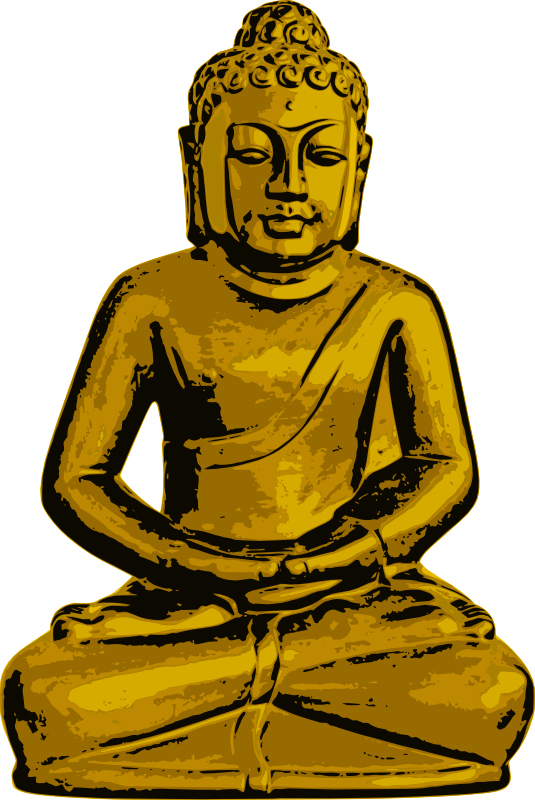In the West, meditation’s an awfully tough sell.
I used to substitute-teach meditation classes at my yoga studio, and I’d get at most five or six people. Not many were repeat customers.
People are intrigued by meditation. With life being so fast and crazy, there’s something intuitive about sitting in stillness being beneficial. They want to like it.
But then they don’t.
“Well, I’m terrible at that,” they say. Because even though they’re sitting still, their minds are scampering in a million directions.
“I’m too crazy to meditate,” people say, which is kind of like when people say their muscles are too stiff for yoga. But that’s the point, isn’t it? To address the craziness and stiffness?
Maybe part of the problem is that there’s a misconception of what meditation means.
Meditation is a pretty scary idea to a lot of us because we think it means sitting still and emptying out our minds — becoming a kind of human stone. Who the heck can, let alone wants, to become a stone? But the great contemporary meditation teachers, including Thich Nhat Hanh and Pema Chodron, tell us that’s not really what meditation is about. It’s about watching our thoughts come and go, without obsessing or ruminating over any one of them, as is so often our human tendency.
Years ago, when I was in my 20s, I lived in busy New York City. I had a stressful job and a personal life that seemed — as it does for most of us in our 20s — a lot more complicated than it probably was. I turned to meditation to help me deal with all that chaos. I started visiting meditation centers and taking yoga classes.
Back then, I thought of meditation in “human stone” terms. This was reinforced when I started going to a Zen meditation center near where I lived. The monastics there took a strict view of meditation. They wore hairy-looking brown robes and had shaved heads and pointed me and other apprehensive newbies to hard brown meditation cushions.
One of the nuns was a woman in her mid-30s who’d once been a dancer. I liked her until one night, I showed up for a nighttime meditation session. I was just getting over a cold, and as we settled into silence and closed our eyes, I coughed and wiped my nose a few times.
I felt a finger tap my shoulder, and hot breath in my ear.
“I don’t think you really need to do that,” she said.
I sat in terrified paralysis the rest of the session.
Actually, I’m glad she said what she did. It was one of my first lessons in not needing to fix things, in not always reacting right away to a physical or mental impulse.
At the time, though, it was too much for me to handle. Well, I thought, if meditation means not wiping my nose and not coughing, I’m going to be pretty bad at it. I was also afraid of getting yelled at again.
I stopped going to the Zen center, and pretty much stopped trying to meditate altogether.
Months later, I started reading Pema Chodron and Thich Nhat Hanh, who wrote about meditation with a lot more warmth and humor than anyone I’d encountered before. In their accounting, you didn’t silently rap yourself on the mental knuckles each time you got distracted or fidgeted. You just smiled and came back to focusing on the breath.
One day on a lunch break from work, I walked to the southern edge of Central Park. I lay on a big boulder and closed my eyes. Instead of trying to block everything out, as I’d been doing when I tried meditating, I started letting everything in. The sounds of the traffic, people talking, the smells, the breeze on my skin. I still kept thinking and worrying, but the presence and immediacy of what was happening around me helped me focus on something else. It helped me untrap myself from my own brain, which just kept replaying the same tunes over and over.
It was one of the most refreshing 20 minutes I’ve ever spent.
I realized this was the essence of what my newer teachers were saying: that a friendlier way to think of meditation is as a method to restore circulation to the mind, just as physical exercise is a way to restore circulation to the body and the breath. (Of course, body, breath and mind are all interconnected in yogic thinking, like three legs of a tripod chair. By encouraging circulation to one leg, we also begin to revive the others.)
The great thing about being out in the world is that these settings provide plenty to “let in” beyond our own thoughts. If we’re sitting in a room by ourselves, it’s pretty tough to stop marinating in your own anxious juices. Breath is nice and all, but after a while I don’t mind a little something else to pay attention to.
Maybe meditating out in nature, in a park or even on a sidewalk bench could be a way for more Westerners to “succeed” at meditation. It seems more reflective of what meditation is all about: Connecting more to the world, and to reality, rather than removing ourselves. Circulating rather than blocking.
The only thing is, it may take some courage to endure the weird looks from strangers.













